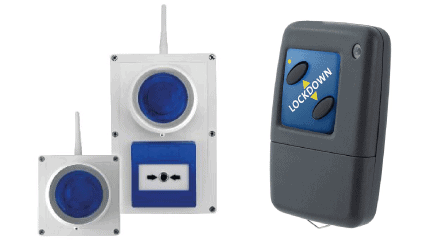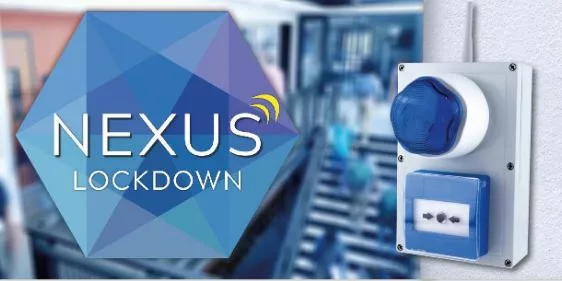Half term for many UK schools is only a matter of weeks away and is a perfect time to install the Nexus School Lockdown system or arrange a site visit.
If you need any help in creating marketing materials to send to your customers, please do not hesitate to contact us. Just a reminder that the Nexus School Lockdown system is wireless so can be installed in a matter of hours. The range is designed to minimise disruption and confusion during events requiring lockdown by providing a clear warning which is easily distinguishable from a fire alert in line with recent OFSTED guidelines.
A Nexus system comprises call points with sounder / beacons and sounder / beacons only. These can be sited up to 1km from each other. When one is triggered, all units in range activate.
Nexus keyfobs act as a mobile panic alert button and will activate units within 100m. A lanyard is fitted for easy access by key staff.



